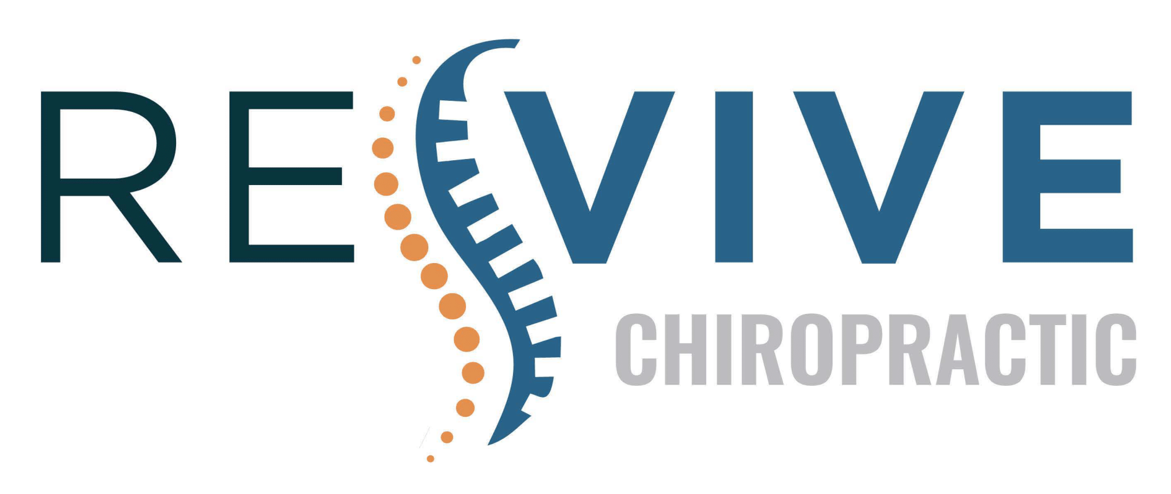You might not realize how much your desk setup affects your posture until discomfort becomes a daily companion. Simple adjustments, like chair height and monitor placement, can make a noticeable difference in your comfort and alignment throughout the workday. By taking a few moments to assess your workspace, you can potentially alleviate strain on your back, neck, and shoulders. But what specific changes should you prioritize, and how can they lead to long-term benefits? Let's explore the adjustments that could transform your daily routine.
Understanding Desk Job Posture
When you sit down at your desk, it's easy to let your posture slip. You might find yourself hunched over, leaning into your screen, or slumping in your chair. This careless position can lead to discomfort and even long-term health issues. Understanding proper desk job posture is essential for your well-being and productivity.
To start, keep your feet flat on the ground or on a footrest. Your knees should be at a 90-degree angle, making sure your legs are comfortable. Sit all the way back in your chair, and allow your back to rest against the backrest. This support helps maintain the natural curve of your spine.
Next, pay attention to your arms and hands. Your elbows should be close to your body, forming another 90-degree angle. This positioning helps prevent strain on your shoulders and wrists while you type.
Also, make certain your wrists are straight, not bent upwards or downwards, to avoid discomfort.
Finally, position your monitor at eye level, about an arm's length away. This height keeps you from craning your neck or straining your eyes.
It may feel like a lot to remember, but these adjustments can make a significant difference in how you feel during and after a long day at your desk. By being mindful of your posture, you'll not only enhance your comfort but also boost your overall focus and productivity.
Importance of Ergonomic Equipment
Investing in ergonomic equipment can drastically improve your comfort and productivity at your desk. When you spend long hours working, the right tools can make all the difference in how you feel both physically and mentally.
Ergonomic equipment, such as keyboards, mice, and desk setups, is designed to support your body's natural posture, reducing strain on muscles and joints.
Using ergonomic tools helps you maintain a healthy alignment while you work. For instance, an ergonomic keyboard and mouse can minimize wrist strain and encourage a more natural hand position. This not only reduces the risk of repetitive strain injuries but also enhances your overall comfort, allowing you to focus on your tasks without distraction.
Moreover, ergonomic chairs and desk accessories promote better posture, which can lead to increased energy levels and productivity. When your body feels good, you're less likely to experience fatigue or discomfort, allowing you to stay engaged and efficient throughout the day.
Additionally, investing in adjustable equipment enables you to customize your workspace to fit your unique needs. You can find the ideal height and angle for your monitor, ensuring your neck and back are properly supported.
In today's fast-paced work environment, prioritizing your comfort isn't just a luxury; it's essential for maintaining your health and performance. By choosing ergonomic equipment, you're taking an important step toward creating a workspace that fosters well-being and efficiency.
Don't underestimate the power of these simple adjustments; they can transform your desk job experience for the better.
Chair Height and Position
Adjusting your chair height and position can considerably impact your comfort and productivity while working. Start by ensuring your chair is at the right height. Your feet should rest flat on the floor, with your knees at about hip level. If your chair's too high, consider using a footrest to maintain that ideal angle. This position helps improve circulation and reduces strain on your legs.
Next, focus on the backrest of your chair. It should support the natural curve of your spine. If your chair has adjustable lumbar support, tweak it until it fits snugly against your lower back. This adjustment can help prevent slouching and minimize back pain throughout your workday.
Also, pay attention to your armrests. Ideally, when your arms rest on them, your elbows should be at a 90-degree angle. If the armrests are too high or low, they can cause shoulder discomfort. If your chair doesn't have adjustable armrests, consider getting a cushion or adjusting your chair height to find a more comfortable position.
Lastly, take a moment to evaluate your overall posture. Your back should be straight against the chair, and your shoulders relaxed. Make sure you're not leaning forward or straining your neck.
Regularly check in on your posture throughout the day and adjust as necessary. By making these simple chair height and position adjustments, you'll create a more ergonomic workspace that promotes comfort and enhances productivity.
Monitor Placement Tips
To reduce strain on your neck and eyes, it's important to set your monitor at the right height and distance.
Ideally, the top of the screen should be at or slightly below eye level, and about an arm's length away from you.
Adjust the angle and tilt to minimize glare and guarantee a comfortable viewing experience.
Ideal Screen Height
Finding the right screen height can make a world of difference in your comfort and productivity during long hours at your desk.
When your monitor's positioned correctly, it helps reduce strain on your neck and eyes, allowing you to focus better.
Here are some tips to guarantee your screen height is ideal:
- Eye Level: Position the top of your monitor screen at or slightly below eye level. This helps maintain a neutral neck position.
- Tilt: Angle your monitor slightly back, about 10 to 20 degrees. This reduces glare and makes it easier to see the screen without straining.
- Distance: Keep the monitor about an arm's length away. While this isn't about height, it complements your screen's position for overall comfort.
- Adjustable Stand: If possible, use a monitor stand or adjustable arm. This allows you to customize the height easily and find what feels best for you.
Distance From Eyes
Maintaining the right distance from your monitor is essential for reducing eye strain and enhancing your overall work experience. Ideally, your screen should be about an arm's length away—roughly 20 to 30 inches. This distance allows your eyes to focus comfortably while minimizing fatigue.
If your monitor is too close, you might find yourself squinting or leaning forward, which can lead to discomfort. Conversely, if it's too far away, you may strain to read text or view images clearly. To find the perfect spot, sit back in your chair and extend your arm; your fingertips should just touch the screen.
Additionally, make sure that the text size on your screen is large enough to read without straining. You might need to adjust the display settings so you don't have to lean in or squint. Remember, the goal is to create a comfortable viewing experience that promotes productivity.
Make these adjustments part of your daily routine. Regularly assess your workspace setup to make sure it meets your needs, and don't hesitate to make changes if you notice discomfort.
Your eyes will thank you for it!
Angle and Tilt
The angle and tilt of your monitor can greatly impact your comfort and productivity during long hours at your desk.
If your monitor isn't positioned correctly, you might strain your neck or eyes, leading to discomfort and decreased focus.
Here are some tips to optimize your monitor's angle and tilt:
- Eye Level: Position the top of your monitor screen at or slightly below eye level. This helps keep your neck in a neutral position, reducing strain.
- Distance: Keep your monitor about an arm's length away. This distance allows you to read the screen comfortably without leaning forward.
- Tilt: Tilt your monitor slightly back, between 10 to 20 degrees. This angle reduces glare and guarantees you're looking down slightly at the screen, which is more ergonomic.
- Adjust for Light: Position your monitor to avoid direct light sources. Adjust the angle to minimize reflections, which can lead to eye strain.
Keyboard and Mouse Setup
When setting up your keyboard and mouse, focus on ideal height alignment to keep your wrists straight and comfortable.
Position your devices so they're within easy reach, minimizing strain on your arms.
This simple adjustment can make a big difference in your overall posture and productivity.
Optimal Height Alignment
Achieving ideal height alignment for your keyboard and mouse is essential for comfort and productivity. If your setup's off, you might experience strain or discomfort, which can hinder your focus.
Here's how to set them up correctly:
- Elbow Position: Your elbows should be at about a 90-degree angle. Adjust your chair or desk height so that your forearms are parallel to the floor when typing.
- Wrist Alignment: Keep your wrists straight and relaxed. Avoid bending them upward or downward while typing or using the mouse. A wrist rest can help maintain this alignment.
- Mouse Proximity: Place your mouse close to your keyboard. This minimizes reaching and keeps your arms relaxed, reducing the risk of strain.
- Screen Height: While not directly about the keyboard and mouse, verify your monitor is at eye level. This way, you're less likely to hunch over, which can affect your overall posture.
Ergonomic Device Placement
Proper ergonomic device placement for your keyboard and mouse can make a significant difference in your comfort and productivity. Start by positioning your keyboard so that your elbows are at a 90-degree angle and your wrists remain straight. When typing, your hands should float just above the keys, minimizing strain. If your keyboard is too high or too low, it can lead to discomfort and even repetitive strain injuries.
Next, place your mouse close to your keyboard. This prevents unnecessary reaching, which can cause shoulder and neck strain. Your mouse should be at the same height as your keyboard to keep your wrist in a neutral position. Consider using a mouse pad with wrist support to enhance comfort.
Ensure that your chair provides adequate support and allows you to maintain proper posture while using these devices. Adjust your chair height so that your feet rest flat on the floor, promoting overall stability.
Lastly, take regular breaks to stretch and move around. This not only helps alleviate tension but also boosts your energy levels.
Desk Organization Strategies
As you navigate through your workday, an organized desk can greatly enhance your productivity and focus. A clutter-free workspace allows you to concentrate better and reduces stress, making it easier to tackle tasks efficiently.
Here are some desk organization strategies to help you create a more streamlined environment.
- Declutter Regularly: Take a few minutes at the end of each day to remove unnecessary items from your desk. Keep only the essentials within arm's reach, like your computer, notepad, and a pen. This minimizes distractions and helps you stay focused.
- Use Organizers: Invest in desk organizers to keep papers, pens, and other supplies neatly arranged. File folders, drawer dividers, and pen holders can help you find what you need quickly, improving your workflow.
- Go Digital: Reduce paper clutter by going digital whenever possible. Utilize cloud storage and digital note-taking apps to store important documents and notes. This not only saves space but also makes it easier to access your information from anywhere.
- Maintain a Clean Surface: Regularly wipe down your desk to keep it clean and inviting. A tidy surface not only looks better but also promotes a sense of calm, allowing you to focus more on your work.
Stretching and Movement Breaks
Taking regular stretching and movement breaks throughout your workday can greatly improve your physical and mental well-being. When you sit for long periods, your muscles can become tense, and your mind may start to feel sluggish. By incorporating short breaks, you'll help alleviate that stiffness and boost your energy levels.
Set a timer to remind yourself to stand up and stretch every hour. You don't need a lot of time—just five minutes will do. Try simple stretches like neck rolls, shoulder shrugs, or wrist stretches. These movements can relieve tension built up from typing and hunching over your desk.
You could also stand and do a few gentle backbends or side stretches to open up your body.
In addition to stretching, consider incorporating movement breaks into your routine. Instead of sending an email, walk over to your colleague's desk. Take a short walk around the office or step outside for a change of scenery. Not only does this get your blood flowing, but it also helps clear your mind and can spark new ideas.
If you're working from home, make it a habit to stand up during phone calls or do a quick set of squats or lunges. The key is to keep your body moving and to break up long stretches of sitting.
Long-Term Posture Habits
Regular movement and stretching throughout the day can set the foundation for developing long-term posture habits. Once you incorporate these practices into your daily routine, you'll find it easier to maintain proper posture, even when you're sitting for extended periods.
It's about building a mindset that prioritizes your body's alignment and comfort.
To effectively nurture these long-term habits, consider the following strategies:
- Ergonomic Workspace: Adjust your desk, chair, and computer screen to promote a neutral spine. Your monitor should be at eye level, and your chair should support your lower back.
- Mindful Sitting: Pay attention to how you sit. Keep your feet flat on the ground, your knees at a 90-degree angle, and avoid crossing your legs. This will help maintain your spine's natural curvature.
- Frequent Breaks: Set a timer to remind you to stand up and stretch every hour. Use these breaks to realign your posture and give your muscles a chance to relax.
- Strengthening Exercises: Incorporate exercises that strengthen your core and back muscles into your weekly routine. A strong core supports your spine, making it easier to maintain good posture.
Conclusion
Incorporating simple adjustments into your desk setup can make a world of difference for your posture and overall comfort. By paying attention to chair height, monitor placement, and using ergonomic equipment, you're already on your way to a healthier workspace. Don't forget to take regular breaks to stretch and move; it's essential for maintaining good posture long-term. With these changes, you'll boost your productivity and well-being, making your desk job more enjoyable and less straining.



